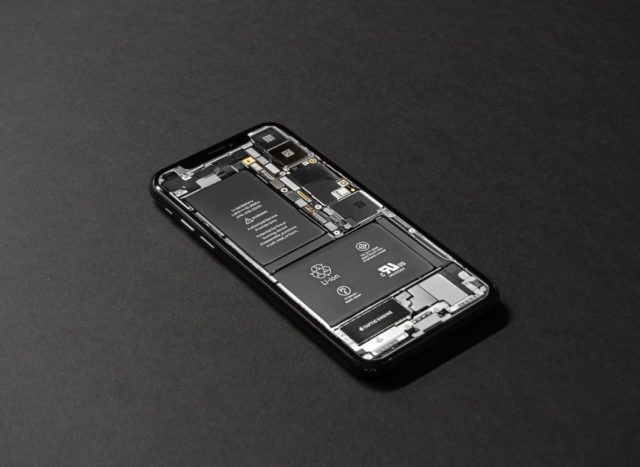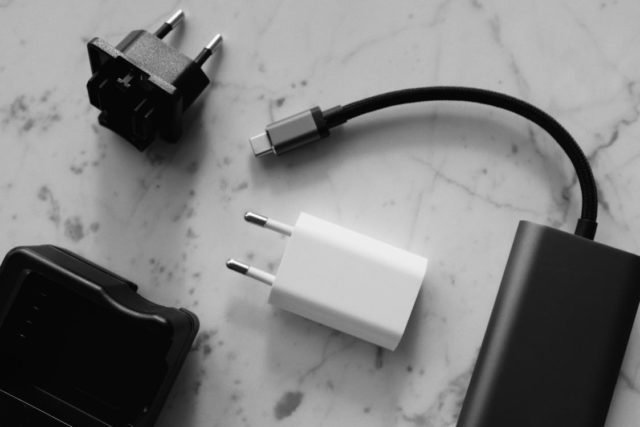Technology is evolving at a fast rate. New electronic devices are manufactured every year, only to be replaced by better, more advanced models.
While tech advancement is inherently beneficial, the accelerated speed by which it progresses poses many problems. For instance, when devices become unusable or obsolete, they can turn into electronic waste.
E-waste pertains to any unwanted electronic products that are no longer functional and are nearing or have reached the end of their lifespan. These can be any electronic devices ranging from gaming consoles to smartphones.
Related: The Best Tech Trends to Fuel the Green Economy of the Future

The Problem with E-waste
The trouble with used electronics is, unlike other types of garbage, many consumers don’t know how to properly dispose of them. Hence, they can end up in landfills and become serious risks to the environment.
Electronic devices contain toxic substances like mercury, lead, and cadmium, which can contaminate the soil, groundwater, and air when they are buried or incinerated in unprotected dumpsites. Not to mention, exposure to e-waste can also cause a long list of health problems.
The United Nations University’s Global E-waste Monitor reports that a whopping 50 million metric tonnes of electronic items are discarded each year, equal to the weight of almost 4,500 Eiffel towers.
Top Facts You Need to Know About E-waste
To help you understand how big of a threat e-waste is to human health and the environment, here are some critical facts you need to know.
E-waste is extremely hazardous
As previously stated, electronic components contain various toxic materials. For instance, old TVs and computer screens use cathode ray tubes (CRT) containing four to eight pounds of lead, and incorrect disposal can leak neurotoxins into the earth and water supply.
Below are some of the most prevalent hazardous compounds identified in electrical waste and the health effects they can cause.
- Mercury – Even modest concentrations of mercury can harm the kidneys and the brain.
- Brominated Flame Retardants (BFRs) – BFRs can have a negative impact on the immune system and linger in the environment.
- Lead – Prolonged exposure to lead can result in severe damage to the brain.
- Cadmium – When cadmium accumulates in the body, it’s been proven to cause cancer and kidney impairment.
- Beryllium – Most motherboards have beryllium, a recognized human carcinogen that, when inhaled, destroys the lungs.

Recycling e-waste benefits the economy
Reusing and recycling e-waste is not only safer and more environmentally friendly but also cost-effective. Many of the materials in used devices, appliances, and other types of e-waste can be reused for other purposes. Some businesses purchase and accept old laptops and appliances to recycle some working parts.
However, only a small amount of e-waste is being recycled. Therefore, if you need replacements, consider purchasing refurbished gadgets to support the electronic recycling industry.
Many used gadgets are kept in homes
As noted in an article by the Balance SMB, a report shows that approximately 75% of e-waste remains sitting around in households. Most individuals simply don’t know what to do with them or lack available and convenient disposal options. When these gadgets are eventually discarded, they are usually thrown away carelessly.
Additionally, consumers who keep damaged electronic goods in their homes for longer than necessary lose the chance to have them recycled by the manufacturer or do a trade-in.
Manufacturers are deliberately reducing the lifespan of electronic products
Another major issue is how the average lifespan of gadgets is becoming noticeably shorter—an effect of what is called planned obsolescence. This strategy entails intentionally limiting a product’s useful life to push consumers to seek replacements in the near future, ultimately boosting demand and driving sales.
People are biologically wired to satisfy basic needs, and since gadgets are now considered a necessity for surviving modern life, smart marketing efforts like this can easily urge consumers to buy the latest devices as soon as they are launched.
A significant amount of e-waste is shipped to developing Asian countries
Some Asian reclamation and disposal technologies work well, but many are ineffective and have major environmental repercussions. Furthermore, the ethics behind choosing locations is questionable. For instance, some burning pits are created in the center of villages, which can harm local communities.
Moreover, a huge chunk of e-waste in Asia is not even generated there but is imported from Western countries that use Asian countries as a dumping ground for their discarded electronics.
There’s a strong lack of regulation in e-waste disposal
As explained in the previous item, developed countries export toxic waste to developing nations, many of which practice unsafe and illegitimate recycling methods. Currently, there is no law in the United States prohibiting the exportation of e-waste to other countries.
In both the recycling and manufacturing industries, the lack of regulation addressing the safe disposal of electronics allows harmful practices. Moreover, there’s no intervention against planned obsolescence tactics like changing software programs and ending tech support for earlier gadget models.
Slowing down the manufacturing and release cycles of electronic devices can be helpful in reducing tech consumption, but it appears that companies don’t plan on adopting these changes anytime soon.
Smaller gadgets generate more e-waste
Portable, hand-held gadgets are highly in demand, and it’s typical for most American households to have multiple smaller devices like smartphones and tablets. On the other hand, many families only have one or two personal computers in their homes. People also upgrade smartphones more frequently than desktop computers.
Related: Top Solar Energy Gadgets for Eco-Friendly Shopping
Easy Steps to Reducing E-Waste
Now that you’ve gained a better idea of how e-waste affects lives and the environment, you may want to know how you can contribute to solving this dilemma. Here are some simple tips you can follow.
Sell your old electronics
Selling your electronic devices is one of the simplest and most effective ways to reduce your e-waste. With social media, it’s relatively easy to post a listing and find a buyer. Also, many are happy and willing to purchase a device for considerably cheaper than their original price, making it a win-win situation for both you and the buyer.
Make donations
Apart from selling, you can also donate your device to those in need, given that it’s still functioning properly. This is a great option if you’re planning to move and don’t want to bring bigger electronic goods like TV and stereo sets to your new home.

Look up or inquire about recycling programs
Popular tech companies offer recycling programs for recycling outdated gadgets. You may even receive a perk for returning your old electronics, such as discounts.
Check if the manufacturer of your gadget implements recycling methods or talk to a customer representative. If you need to dispose of an Apple device like a MacBook, bring it to the nearest store, as the company follows a detailed program to recycle Macbooks and other gadgets they produce.
Reduce your consumption
By limiting your tech consumption, you won’t have a lot of products that you may eventually need to reuse and recycle. Moreover, you can drastically lower your e-waste.
Before purchasing any electronic gadget, consider whether you truly need it. If you’re going to buy a new device despite owning one that is perfectly functional, why not just upgrade the software or install additional applications? Also, instead of purchasing a brand-new device, try getting a refurbished one. Being a wise consumer will help you manage your household’s e-waste.
Something to Ponder on
As technology grows, so does the amount of discarded electronics. The continual increase in e-waste is one of the most urgent and threatening problems the world is facing. Therefore, everyone must do their part in addressing the issue by minimizing their e-waste and practicing proper disposal.
By taking steps to reduce your e-waste, you are making it possible for the next generation to enjoy technology in a safe and healthy environment.
Author: Garry Everrett
